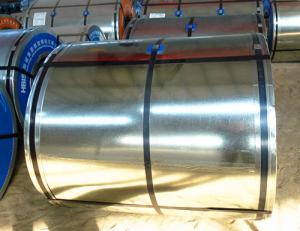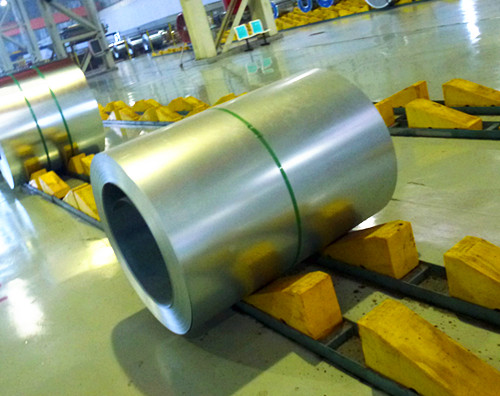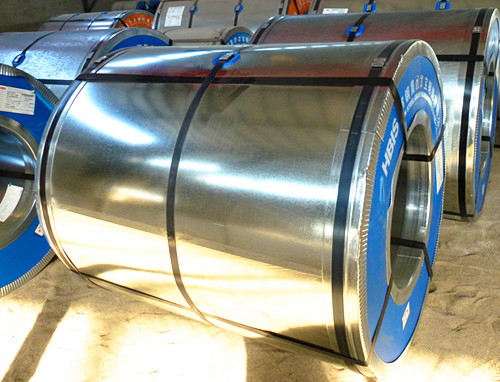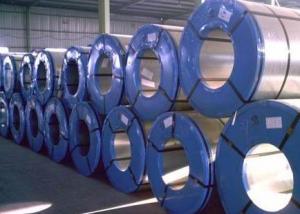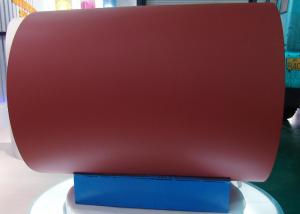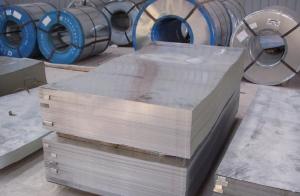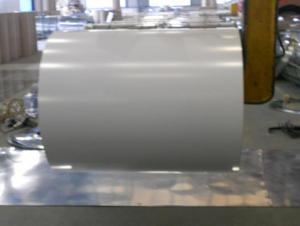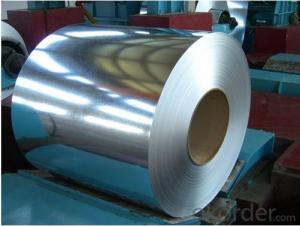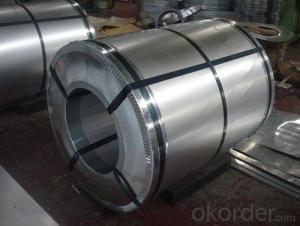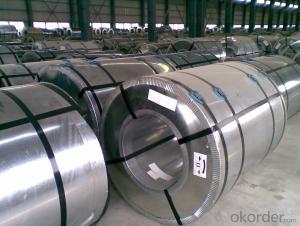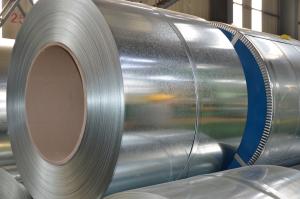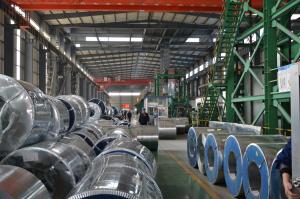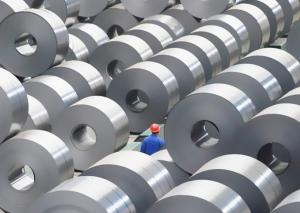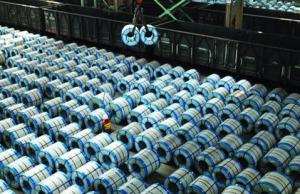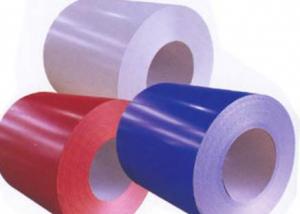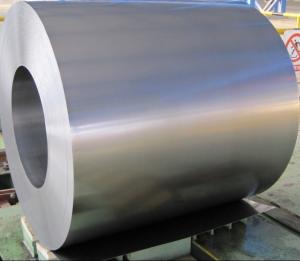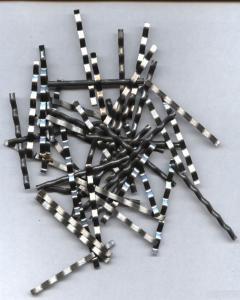GI Coil
- Loading Port:
- Tianjin
- Payment Terms:
- TT OR LC
- Min Order Qty:
- -
- Supply Capability:
- 8000 m.t. m.t./month
OKorder Service Pledge
Quality Product, Order Online Tracking, Timely Delivery
OKorder Financial Service
Credit Rating, Credit Services, Credit Purchasing
You Might Also Like
Grade: SGH340, DX51D and SGCC (customized)
Surface treatment: passivation, oiling, chromed, unoiled
Spangle types: minimal, zero and large
Thickness: 0.37 to 3.5mm
Width: greater than 1,000mm
Inner diameter: 508 to 610mm
Zinc coating: greater than 80g/m2
Applications:
Construction, home appliance, hardware and machinery
Standards:
JIS g3302 1998, ASTM a653 2003, EN10142 1990
EN10327 2004, AS1397 2001, GB2518-2004
Packing: export packing/sea worthy for international delivery
- Q: What are the common manufacturing processes involved in producing steel products?
- The common manufacturing processes involved in producing steel products include ironmaking, steelmaking, casting, rolling, forging, and machining.
- Q: How do steel products contribute to the recycling industry?
- Steel products contribute to the recycling industry by being highly recyclable themselves. Steel can be recycled indefinitely without losing its properties, making it a valuable resource in reducing the need for new steel production. This helps conserve natural resources, reduce energy consumption, and minimize greenhouse gas emissions associated with steel manufacturing. Additionally, the recycling of steel products helps divert waste from landfills and promotes a circular economy by enabling the creation of new steel products from recycled materials.
- Q: How is steel used in the manufacturing of HVAC systems?
- Steel is commonly used in the manufacturing of HVAC systems for its strength, durability, and ability to withstand high temperatures. It is used in various components such as air ducts, heat exchangers, and furnace enclosures, ensuring the system's structural integrity and longevity.
- Q: What are the different types of steel products used in the manufacturing of camping equipment?
- The different types of steel products used in the manufacturing of camping equipment include stainless steel for cookware and utensils, carbon steel for knife blades and axe heads, galvanized steel for tent poles and stakes, and alloy steel for camping gear like carabiners and climbing equipment.
- Q: What are the advantages of using steel in bridge construction?
- There are several advantages of using steel in bridge construction. Firstly, steel is known for its high strength-to-weight ratio, making it an ideal material for building bridges that can handle heavy loads while remaining structurally sound. Secondly, steel possesses excellent durability and resistance to corrosion, which ensures a longer lifespan for the bridge and reduces maintenance costs. Additionally, steel bridges can be fabricated off-site and assembled quickly, leading to shorter construction periods and less disruption to traffic. Lastly, steel is a sustainable material as it can be recycled, making it an environmentally friendly choice for bridge construction.
- Q: How are steel products used in the construction of residential buildings and housing complexes?
- Steel products are extensively used in the construction of residential buildings and housing complexes due to their strength, durability, and versatility. They are commonly employed in the structural framework, such as beams, columns, and trusses, providing a sturdy and stable support system. Steel is also used for reinforcing concrete, increasing the strength and resistance of the building against various forces. Additionally, steel is utilized in the construction of roofing systems, wall panels, stairs, and balconies, offering aesthetic appeal and long-lasting performance. Overall, steel products play a crucial role in ensuring the safety, stability, and longevity of residential buildings and housing complexes.
- Q: What are the different surface finishes available in steel products?
- Some of the different surface finishes available in steel products include mill finish, brushed finish, polished finish, galvanized finish, powder coated finish, and painted finish. These finishes serve different purposes such as providing corrosion resistance, improving aesthetics, enhancing durability, or adding a decorative touch to the steel products.
- Q: What are the applications of steel in the wastewater treatment industry?
- Steel is widely used in the wastewater treatment industry for various applications. It is used to construct tanks and vessels that hold wastewater, as steel is highly durable, corrosion-resistant, and can withstand harsh environmental conditions. Steel is also used in the construction of piping systems, pumps, and valves, ensuring efficient transportation and control of wastewater. Additionally, steel is employed in the manufacturing of screening and filtration equipment, which helps remove solid waste from wastewater. Overall, the applications of steel in the wastewater treatment industry contribute to the effectiveness and longevity of the treatment processes.
- Q: What are the different types of steel products used in the manufacturing of kitchen appliances?
- The different types of steel products commonly used in the manufacturing of kitchen appliances include stainless steel, carbon steel, and galvanized steel. Stainless steel is a popular choice due to its resistance to corrosion and its sleek appearance. Carbon steel is often used for cookware due to its heat conductivity and durability. Galvanized steel may be used for the exterior of appliances to provide a protective coating and prevent rusting.
- Q: How is steel used in the production of industrial boilers and pressure vessels?
- Steel is commonly used in the production of industrial boilers and pressure vessels due to its high strength and durability. It provides the structural integrity required to withstand high pressures and temperatures. Steel is used for constructing the shell, tubing, and other components of these systems, ensuring safety and efficiency in various industrial processes.
Send your message to us
GI Coil
- Loading Port:
- Tianjin
- Payment Terms:
- TT OR LC
- Min Order Qty:
- -
- Supply Capability:
- 8000 m.t. m.t./month
OKorder Service Pledge
Quality Product, Order Online Tracking, Timely Delivery
OKorder Financial Service
Credit Rating, Credit Services, Credit Purchasing
Similar products
Hot products
Hot Searches
Related keywords
